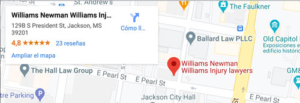Will Mississippi Drivers Stop Texting and Driving?
In December 2016, a significant move by the National Highway Transportation Safety Administration (NHTSA) set the stage for potentially transformative changes in driving behavior across Mississippi and the nation. The Phase 2 proposal of the Driver Distraction Guidelines targets a modern culprit of road safety issues: the cellphone.
Understanding the New Driver Mode Proposal
The NHTSA has proposed guidelines urging cellphone manufacturers to integrate a “driver mode” into devices. This mode would effectively reduce distractions by disabling certain functions while the vehicle is in motion. Features like texting, scrolling, and internet browsing would be locked, while essential services like navigation and emergency calls remain accessible.
The Technology Behind Driver Mode
The proposed system involves pairing cellphones with vehicle interfaces, which would automatically trigger driver mode, turning off the phone’s screen to prevent distractions. In scenarios where automatic pairing isn’t available, drivers would be required to activate driver mode manually. This forward-thinking approach aims to evolve as technology does, with the ultimate goal of phones being able to detect driving conditions and activate the mode independently.
Legal Implications and the Role of Attorneys
The introduction of driver mode could significantly impact how personal injury cases are handled in Mississippi. Car accident attorneys play a crucial role in these situations. They help victims of distracted driving accidents understand their rights and the nuances of pursuing compensation.
Personal injury attorneys are adept at gathering evidence that supports the involvement of phone use in accidents. With driver mode potentially mandatory, the legal landscape may shift, emphasizing the prevention of such incidents and holding drivers accountable for bypassing safety features.
Challenges and Opportunities
While the guidelines offer a clear path toward reducing distractions, their success depends heavily on compliance and technological advancement. The integration of such technology poses challenges, including privacy concerns and the variability of technological adoption among vehicle manufacturers and owners.
The Broader Impact on Road Safety
The broader implications for road safety are profound. By limiting the ability to engage with distracting content, driver mode could significantly reduce the number of accidents attributable to phone use while driving. For Mississippi, a state with varying road conditions and high rates of vehicular accidents, this could mean a substantial improvement in overall traffic safety.
The Critical Role of Attorneys in Advancing Road Safety
Attorneys play a pivotal role not only in representing victims but also in shaping policies that govern road safety. By advocating for stringent enforcement of distraction guidelines and helping clients navigate the aftermath of accidents, attorneys contribute to a safer driving environment. They ensure that victims are compensated and that preventive measures are emphasized in public policy and individual behavior.
Conclusion
Mississippi stands at a crucial juncture with the potential adoption of driver mode in vehicles. This technological advancement, supported by legal expertise and policy enforcement, could herald a new era of road safety, significantly reducing the incidence of distracted driving accidents. As technology and law converge to tackle this modern challenge, the role of informed legal counsel becomes ever more critical in ensuring that these innovations achieve their intended effect on road safety.

















